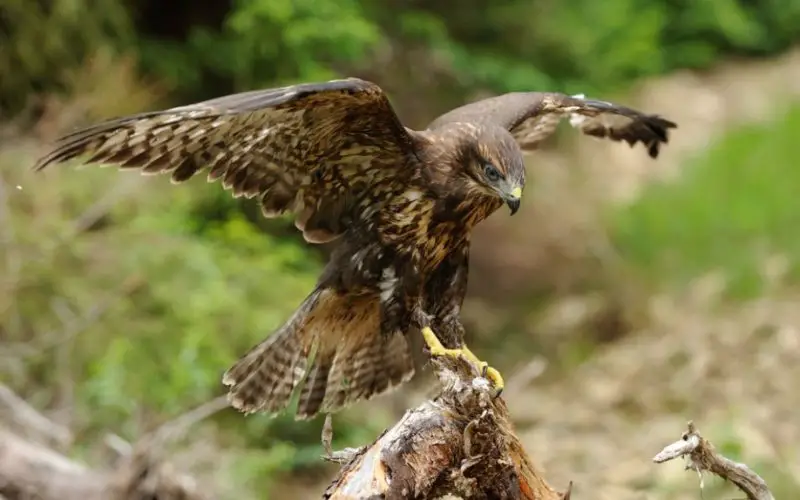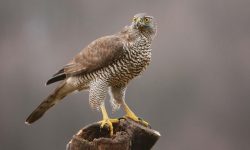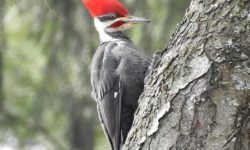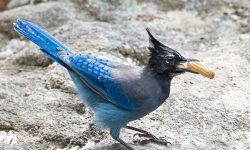Hawks are fascinating birds of prey that often capture our attention when they are seen circling high in the sky. This behavior has intrigued bird watchers, scientists, and nature enthusiasts for centuries. But why do hawks circle?
In this article, we will explore the reasons behind this behavior, the science of thermals, hunting strategies, communication methods, and much more.
The Science Behind Hawks Circling

Utilizing Thermals for Flight
One of the primary reasons hawks circle is to take advantage of thermals—rising columns of warm air. Thermals form when the sun heats the earth’s surface, causing the air above to warm up and rise. These rising currents of warm air create natural elevators that hawks use to ascend without flapping their wings excessively. By riding these thermals, hawks can effortlessly glide to higher altitudes and maintain sustained flight while expending minimal energy.
Thermals are most abundant on sunny days, especially over open fields, rocky terrain, and asphalt roads, where heat absorption is more intense. As the warm air rises, it eventually cools and disperses, forcing the hawks to move from one thermal to another in a spiraling pattern. This circling behavior allows them to continuously gain height before gliding toward their next destination.
Energy Conservation
By taking advantage of thermals, hawks significantly reduce the amount of energy needed for powered flight. Flapping flight requires a tremendous amount of energy, particularly for large raptors like hawks, which have broad wings adapted for soaring. Instead of continuously beating their wings, hawks leverage these rising air currents to stay aloft for extended periods with minimal exertion.
This energy-efficient flight strategy is crucial for their survival. It enables hawks to cover vast distances in search of prey, territory, or suitable nesting sites. It is also particularly beneficial during migration, allowing them to travel long distances while conserving their energy reserves. By circling within thermals before gliding forward, hawks can maximize their flight efficiency and sustain themselves even in environments with scarce food resources.
Gaining a Strategic View
Circling at high altitudes provides hawks with an expansive vantage point, allowing them to scan the landscape for prey, predators, and other territorial threats. Their keen eyesight, which is among the sharpest in the animal kingdom, enables them to detect small animals from great distances. By maintaining height through thermals, hawks can patiently observe potential targets and plan their hunting strategies.
In addition to spotting prey, this high-altitude circling behavior also helps hawks monitor their surroundings for dangers such as larger predators or rival raptors that may intrude on their territory. Moreover, the ability to gain altitude effortlessly aids hawks in navigation, particularly during long migratory journeys. They can survey landmarks, wind currents, and environmental conditions from above, ensuring they follow the most efficient routes to their destinations.
Hawks’ mastery of thermals and energy-efficient flight techniques demonstrates their remarkable adaptation to aerial hunting and long-distance travel. Their ability to soar effortlessly while maintaining a strategic aerial advantage is a key factor in their survival and dominance in the skies.
Hunting and Prey Detection
Spotting Prey from Above
Hawks are equipped with some of the most powerful eyesight in the animal kingdom, estimated to be up to eight times sharper than that of humans. Their keen vision allows them to detect even the slightest movements of potential prey from incredible heights. By soaring and circling above open fields, woodlands, and grasslands, hawks can systematically scan large areas, maximizing their chances of spotting rodents, small birds, reptiles, and other prey.
The circling behavior serves as an efficient hunting technique, enabling hawks to patiently observe their surroundings without wasting energy on unnecessary wing flapping. Their high vantage point not only improves their ability to detect prey but also allows them to monitor obstacles, competitors, and potential threats before making a move. Once a hawk locks onto its target, it will often adjust its circling pattern to track the prey’s movement before initiating an attack.
The Dive Attack Strategy
Once a hawk has identified a suitable prey animal, it doesn’t always strike immediately. Instead, it may continue circling to assess the best moment for an attack. This waiting period allows the hawk to study the prey’s behavior, anticipate its movements, and determine the optimal angle of attack.
When the time is right, the hawk tucks in its wings and enters a high-speed dive, known as a stoop. Depending on the species, a hawk’s dive speed can exceed 100 mph (161 km/h), allowing it to close the distance between itself and its prey in mere seconds. During the final approach, hawks use their sharp talons to grasp and immobilize the target, often delivering a swift, precise strike to ensure a quick and efficient kill. Their powerful feet and razor-sharp claws are specially adapted for this purpose, making them formidable aerial predators.
Cooperative Hunting
While most hawks are solitary hunters, certain species, such as Harris’s hawks (Parabuteo unicinctus), exhibit cooperative hunting behavior. These social raptors form small hunting groups, typically consisting of family members, to increase their chances of securing food. Circling can play a crucial role in their hunting strategy, serving as a method of communication and coordination among group members.
In cooperative hunting, one hawk may circle above, keeping an eye on potential prey while the others position themselves strategically. This teamwork allows them to flush out hidden animals, drive prey into the open, or take turns chasing and exhausting a target. This hunting method is particularly advantageous in arid environments where food is scarce, as it enhances the overall efficiency of capturing prey. By working together, Harris’s hawks can take down larger prey that would be difficult to capture alone, ensuring the survival of the group.
Whether hunting alone or in teams, hawks’ ability to spot prey from great heights, execute rapid dive attacks, and even coordinate hunts highlights their remarkable adaptability and efficiency as top avian predators.
Communication and Social Behavior
Territorial Displays
Hawks are highly territorial birds, and circling can serve as a visual signal to assert dominance over a specific area. By soaring over their claimed territory, hawks send a clear warning to other raptors and potential intruders that the region is already occupied. This behavior is especially common during the breeding season when hawks are more protective of their nesting sites.
In some cases, if an intruding hawk enters another’s territory, the resident hawk may escalate the display by engaging in aggressive aerial maneuvers, such as diving at the intruder or engaging in mid-air chases. These encounters help establish clear territorial boundaries and reduce the likelihood of direct conflict. By using circling as a form of visual communication, hawks can minimize unnecessary fights while still maintaining control over their hunting and nesting grounds.
Mating Displays
During the breeding season, male hawks engage in elaborate aerial displays to attract a mate. These courtship behaviors often include circling, high-speed dives, and even dramatic talon-locking spirals with a potential partner. In some species, males will perform a series of loops, swoops, and ascents to demonstrate their strength, agility, and flying prowess to impress a female.
One of the most spectacular mating displays involves talon-grappling, where a pair of hawks locks their talons mid-air and tumbles toward the ground before releasing at the last moment. This breathtaking display not only serves as a bonding ritual but also helps assess the physical fitness and compatibility of potential mates. Successful aerial courtship displays often lead to pair bonding, after which the hawks will work together to build a nest and raise their young.
Group Circling (Kettling)
While hawks are generally solitary or territorial birds, they sometimes engage in group circling behavior known as kettling. This phenomenon occurs most frequently during migration when large numbers of hawks take advantage of the same thermals to gain altitude before continuing their journey.
Kettling is commonly observed in species such as broad-winged hawks (Buteo platypterus), which migrate in massive flocks. As they rise in spiraling formations, the hawks appear to form a “kettle” in the sky, resembling steam rising from a boiling pot. This behavior allows them to conserve energy by soaring on rising air currents rather than flapping their wings continuously over long distances.
In addition to being an energy-efficient strategy, kettling may also serve a social function. By traveling in groups, migrating hawks benefit from safety in numbers, reducing the risk of predation and improving navigation. The sight of hundreds or even thousands of hawks kettling together is one of the most awe-inspiring spectacles in the birdwatching world.
Whether signaling dominance, attracting mates, or joining forces during migration, hawks use circling as a powerful means of communication. Their aerial displays not only showcase their impressive flight abilities but also play a crucial role in their survival and reproduction.
Migration Patterns and Seasonal Circling
Long-Distance Travel
Many hawk species are migratory, traveling thousands of miles between their breeding and wintering grounds each year. These seasonal movements allow them to find abundant food sources, avoid harsh winter conditions, and return to ideal nesting sites when the breeding season arrives. Some hawks, such as the broad-winged hawk (Buteo platypterus), undertake migrations spanning from North America to South America, covering distances of up to 4,500 miles (7,200 km).
Circling plays a crucial role in their long-distance travel strategy. Before embarking on lengthy flights, hawks use rising air currents, known as thermals, to gain altitude. By soaring upward in circular patterns, they can reach great heights without expending much energy. Once they achieve the desired altitude, they enter a gliding phase, allowing them to travel long distances with minimal wing flapping. This technique, known as “thermal hopping,” enables hawks to maintain sustained flight while conserving energy, which is essential for their endurance during migration.
Following the Wind Currents
Migrating hawks do not simply fly in a straight line; they strategically follow natural wind currents and atmospheric conditions to optimize their journey. They rely on updrafts, thermals, and ridge lift—wind that is deflected upward by landforms such as mountains or cliffs—to stay aloft with minimal effort. This method helps them cover vast regions without exhausting themselves.
Wind patterns also influence the migration routes of hawks. For example, many raptors avoid crossing large bodies of water, where thermals are scarce. Instead, they follow land-based routes with reliable rising air currents, such as mountain ridges, valleys, and coastal plains. This explains why major hawk migration corridors, such as those in Central America and along the Appalachian Mountains, attract large numbers of migrating raptors each year.
By skillfully navigating these atmospheric conditions, hawks ensure a successful and energy-efficient migration. Their ability to harness wind currents and thermals highlights their remarkable adaptation to seasonal movements, allowing them to thrive across vast and changing landscapes.
Misconceptions About Circling Hawks
Myth: Hawks Circle Only Over Dying Animals
One common myth is that hawks circle over dying animals, similar to vultures. However, hawks do not scavenge like vultures; instead, they hunt live prey.
Myth: Circling Hawks Predict Bad Weather
Some people believe circling hawks indicate incoming storms. While birds can sense atmospheric changes, hawks primarily circle for flight efficiency rather than predicting the weather.
Conclusion
Hawks circle for various reasons, including utilizing thermals, conserving energy, hunting, communicating, and migrating. This behavior is a vital part of their survival strategy, allowing them to dominate the skies efficiently. Next time you see a hawk soaring above, you’ll have a deeper appreciation for the incredible science and instincts behind its flight.
Understanding why hawks circle enhances our appreciation of these magnificent birds and their role in nature. Whether they are searching for prey, navigating migration routes, or performing aerial displays, their soaring behavior is a testament to the beauty and efficiency of nature’s design.






